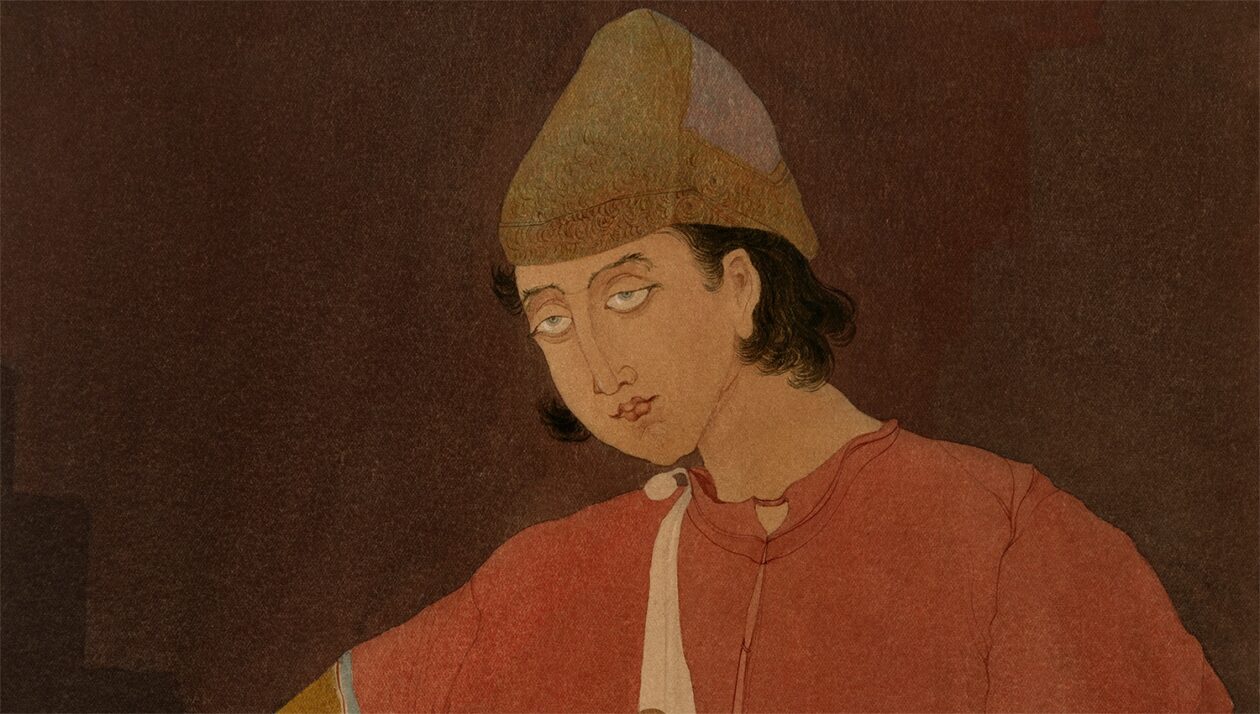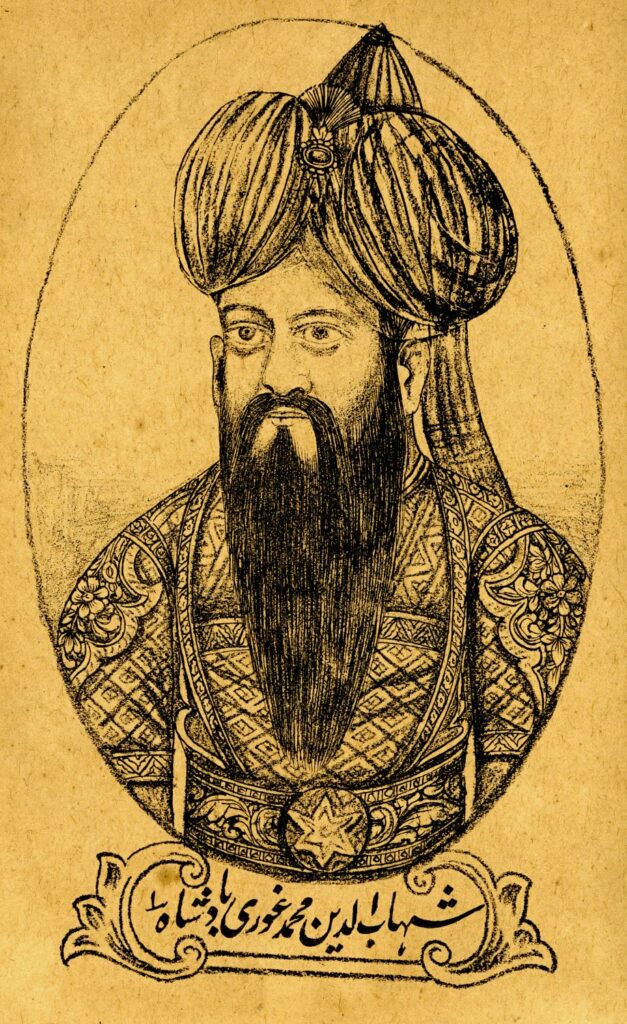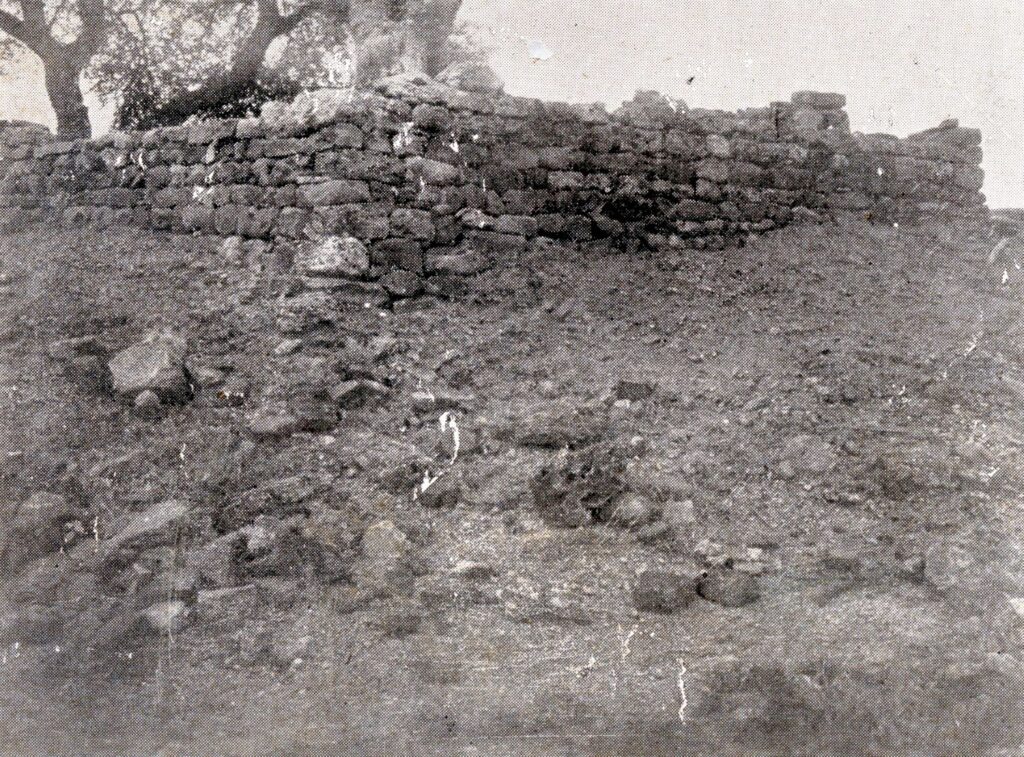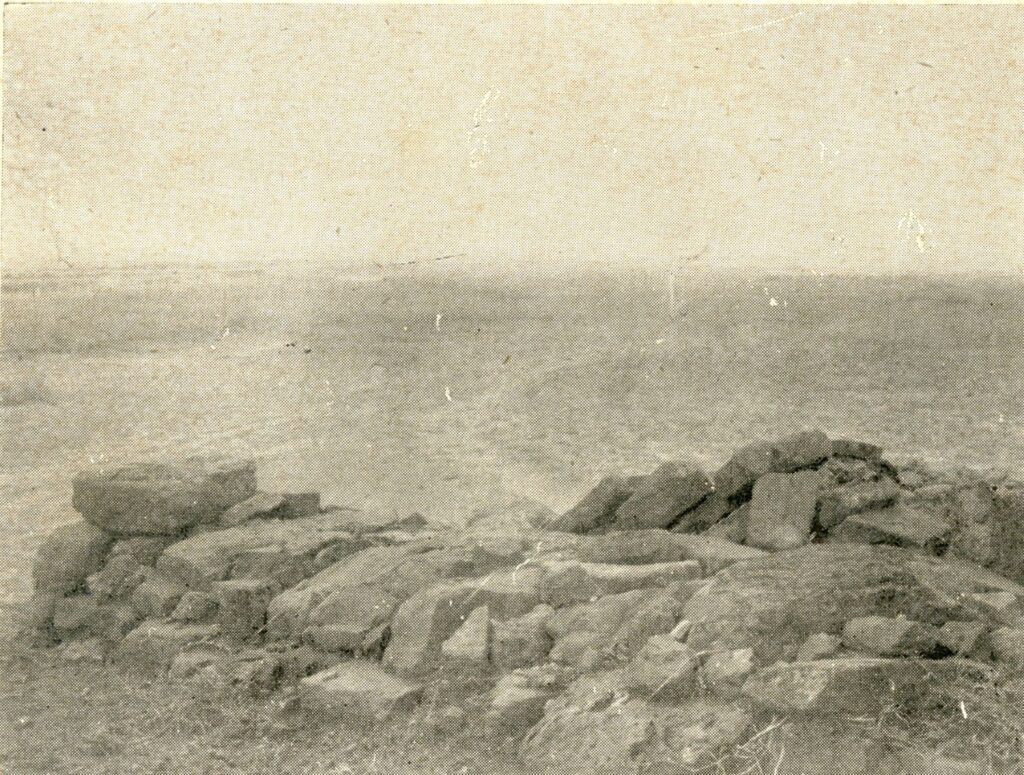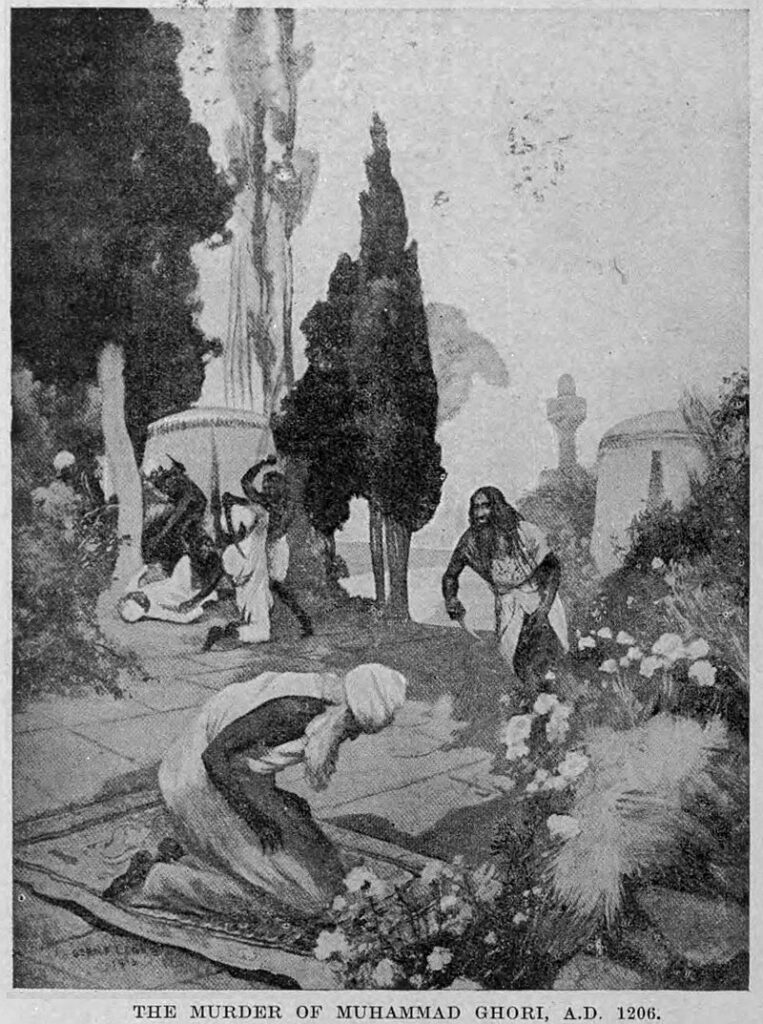MERE ILLUSIONS STILL STAND ABOUT THE GATES OF SOMNATH MANDIR;
FACTUALLY MYTH OF STORY TELLING ABOUT SULTAN MAHMUD GHAZNAVI.
The myth is evident even today. Sultan Mahmud Ghaznavi stole the Golden Gates of Somnath. The illusion of being golden itself seems a joke. The accusation gets repeated again and again and has led to so many misunderstandings that it needs to be corrected once or all. Truth must prevail now about these actual Sandalwood Gates (or even Deoar) of the Mausoleum of Sultan Mahmud Ghaznavi.
The Mausoleum of Sultan Mahmud Ghaznavi was built by his son Sultan Masud Ghaznavi, and in no way are relics of a Mandir could have been placed on a sacred monument of the Muslims. Could his son have committed this outrage against his father? The myth was perpetuated to the extent that the most silly Lord Ellenborough made it his personal ambition to get them back to India around 1845 AD. Some writers have written that the Gates were removed and taken to the British Museum. Others talk of them being placed in the Agra Fort. What was the truth? Captain Van Orlich published a detailed engraving of the same in his ‘Travels to India’, published in 1845. They were then in the Agra Fort. One look at the Gates should have made people hang their heads in shame. Pure Islamic designs with Arabic Kufic inscriptions on them. Masud Saad Sulaiman the Lahori poet has given the existence of wonderful carpenters and naqashi carvers in Lahore. The illustration is self-evident. There is nothing even remotely Hindu about them. Made by Muslim craftsmen in pure Islamic traditions.
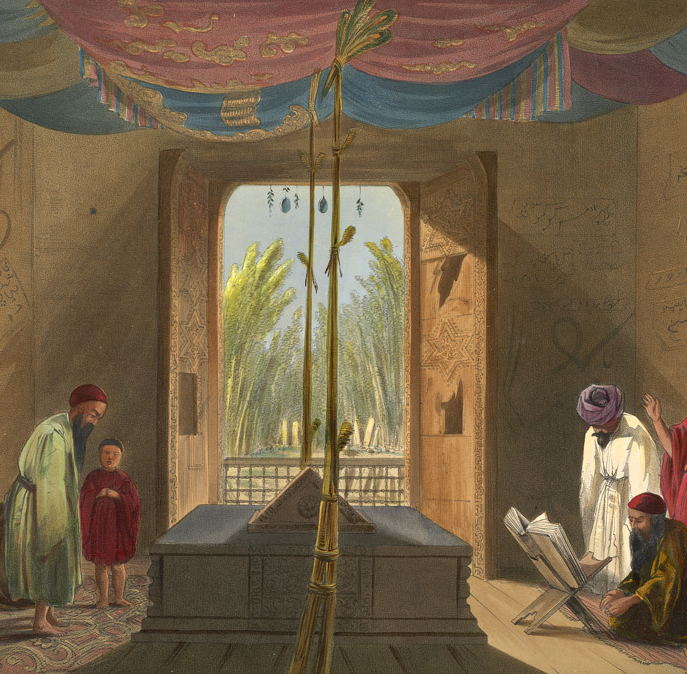
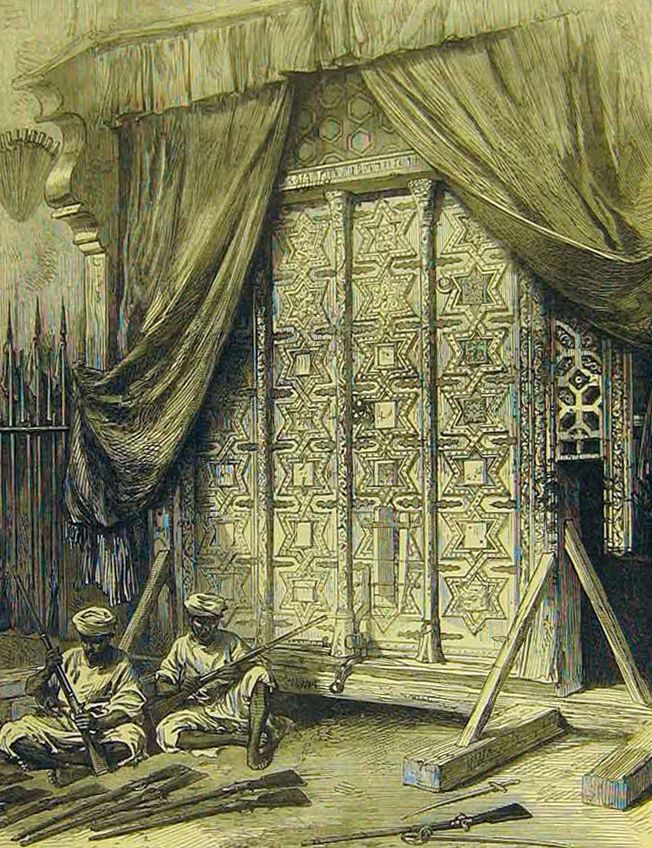
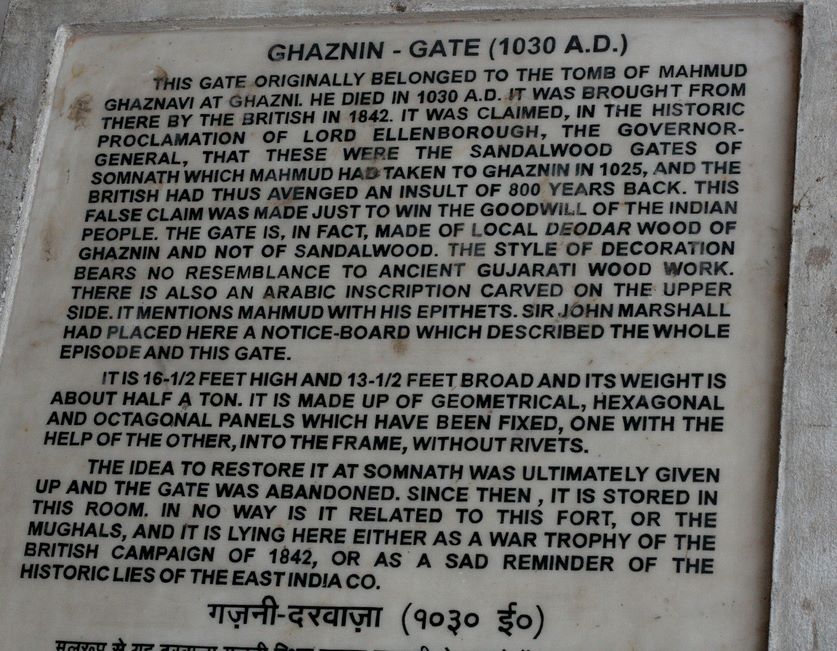
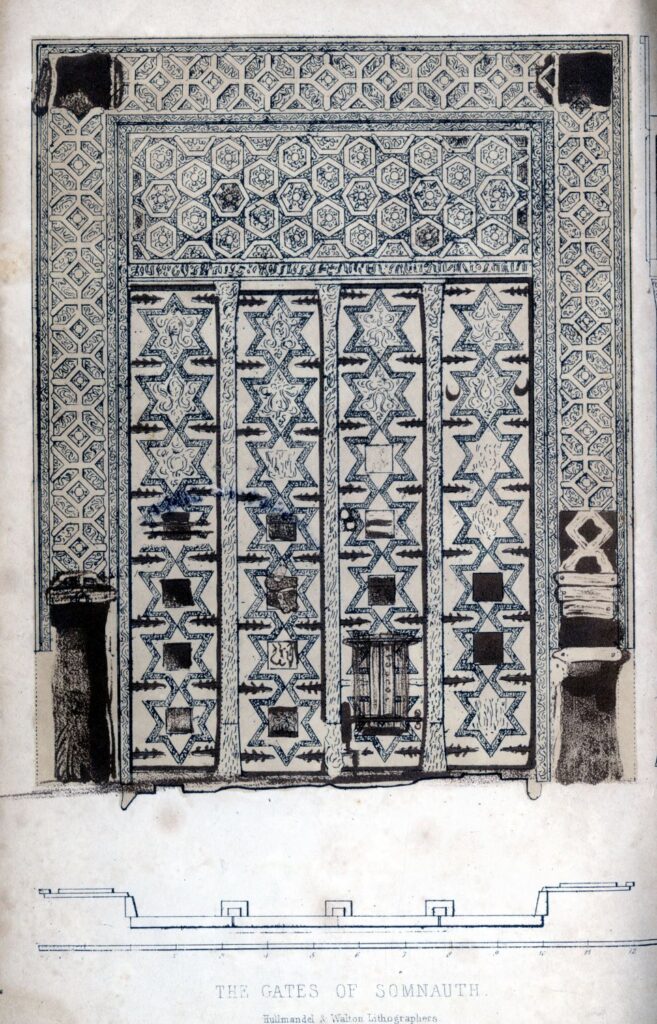


Syad Muhammed Latif in his ‘History of the Punjab’ eulogizes Lord Ellenborough for bringing them back after centuries , and placing them in British Museum. Dr Nazim corrects the same in his history of Sultan Mahmud Ghaznavi by writing:
“the misguided enthusiasm of Lord Ellenborough who believed that the gates were of the temple, which the Sultan was supposed to have carried away.”
The image is rare and here we give it to you. The Gates of Somnath stolen from Mandir of Somnath are Islamic designed Gates with Arabic Kufic inscriptions. The temple of Somnath was a LINGAM carved out of mountain and that is a another story worth telling. What is next about story telling? Utter shame! Truth breaks the shackles of falsehood.
Muslim sentiments? Not in a million years. Spreading lies part of the Divide and Rule policy, and the British were very much part of it. One could perhaps face Dr Ellenborough for trying to perpetuate evil designs against Islam and its people. The Laws of Allah are such that falsehood becomes exposed on their own, but it is a duty of truth searching person to set records straight. To win the heart of Hindus, Ellenborough brought the gates back by removing them from the mausoleum (stole), and then realizing that by placing them back, it would become the joke of the century, and including blasphemy of placing an Islamic object in a Hindu temple. India should send them back to Afghanistan as a homage to things gone wrong.
